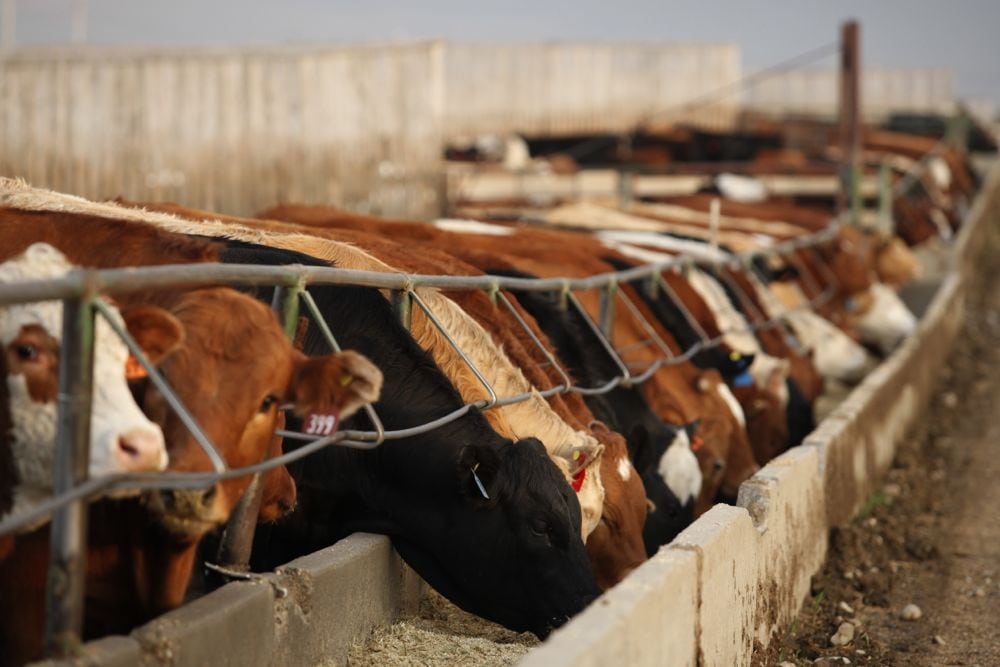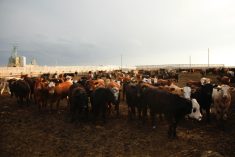Compared to last week, western Canadian yearling prices were down $4-$6 on average; however, mid-weight and lighter calves traded $4 lower to as much as $8 higher.
The market was extremely variable for calves. Early in the week, prices in the Lethbridge area were actually $10 above values from seven days earlier but this faded by Friday. Weather conditions are influencing the buying pattern, with much of Alberta receiving another bout of winter this past weekend. Once again, health programs and weaning periods are also playing a large role influencing the price structure. Feedlots are focusing on local cattle where they have some idea of the calf history. Feedlot margins remain under water and the prolonged period of negative margins is causing buyers to incorporate a risk discount. The cattle feeder who places cattle in a custom lot is buying 20-40 per cent fewer calves this fall because the erosion of equity last spring. U.S. feeder cattle markets traded $3-$6 higher last week, which underpinned the Canadian market. However, there are more calves coming on stream in the northern Plains, limiting demand from U.S. buyers.
Read Also

Alberta crop conditions improve: report
Varied precipitation and warm temperatures were generally beneficial for crop development across Alberta during the week ended July 8, according to the latest provincial crop report released July 11.
In central Alberta, Angus-blended steers weighing 865 lbs. coming just off grass were quoted at $172; vaccinated mixed heifers fresh off pasture weighing just under 900 lbs. were valued at $159. In southern Alberta, larger-frame, medium-flesh Simmental-based steers coming off pasture with a full health program weighing 940 lbs. were reported at $176. In central Saskatchewan, larger-frame medium-flesh black steers weighing 900 lbs. were valued at $175 and similar Charolais-blended heifers averaging 850 lbs. were quoted at $168. The yearling market seemed to be firm in eastern Saskatchewan and Manitoba. In Manitoba, Simmental-based steers with medium butter levels weighing 875 lbs. were quoted at $184.
In central Alberta, vaccinated Angus-based steers fresh off their mothers and averaging just over 600 lbs. were quoted at $207 and similar-quality heifers were valued at $176. East of Calgary, there was a smaller group of Charolais-based unweaned steers coming from a full health program weighing 521 lbs. valued at $226 and similar-quality mixed heifers weighing 515 lbs. were $192. In Manitoba, tan steers weighing 640 lbs. were valued at $194 while their sisters averaging 660 lbs. were quoted at $172.
Feedlots in Alberta and Saskatchewan continue to contend with a severe backlog of market-ready supplies. It’s very difficult to bring in fresh replacements with tied-up equity on unprofitable cattle. At the same time, the calf market has likely put in the seasonal lows. Lighter-weight calves are in hot demand because grassers have potential to make new 52-week highs next spring.
— Jerry Klassen manages the Canadian office of Swiss-based grain trader GAP SA Grains and Produits Ltd. and is president and founder of Resilient Capital, specializing in proprietary commodity futures trading and market analysis. Jerry consults with feedlots on risk management and writes a weekly cattle market commentary. He can be reached at 204-504-8339 or via his website at ResilCapital.com.














